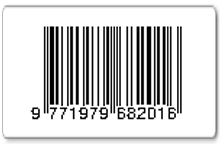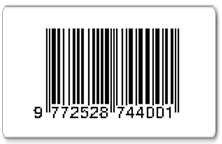Author Guidelines
EDITORIAL
AND WRITING GUIDELINES
A. EDITORIAL POLICY
INTEGRATED ACCOUNTING RESEARCH JOURNAL (JRAT) is published regularly by the Department of Accounting, Faculty of Economics, Sultan Ageng Tirtayasa University, which is every April and October. The aim of the JRAT is to disseminate ideas about accounting in Indonesia. The research and / or thought came from academics, government officials, and practitioners. The first edition of the JRAT was published in April 2008.
JRAT receives article submissions from research results and results of accounting thinking. Articles may be written in Indonesian or English. Articles submitted by the author must be accompanied by a statement that the article has never been published in other publications. The author is asked to send three copies of the original article and the softcopy document in the form of a PDF file on the CD of the article. Article submission must be accompanied by the author's identity which must contain the author's full name, full address, telephone and fax number, and e-mail address if you have one.
Determination of articles that will be published in the JRAT through a blind review process by the editor of JRAT. Consideration of loading bases include: Improved Spelling (EYD) if writing in Indonesian, standard requirements for journal publications, methodology used, and the role of articles in developing accounting. The editor will revise directly if there are errors that can be tolerated, and will return to the author if the editorial board (on the direction of the expert review editor) views that the article is not worthy of publication on JRAT. Articles can be sent to the JRAT editor with this address:
Editor's Address:
Alamat Redaksi:
Sekretariat Jurusan Akuntansi Fakultas Ekonomi
Universitas Sultan Ageng Tirtayasa
Jl. Raya Jakarta KM. 4-Pakupatan Serang Banten
Phone (0254) 280330
Email :
E-mail: [email protected]
B. GUIDELINES FOR WRITING ARTICLES
Guidelines for writing articles that are applied to the JRAT, which may be considered by the author are:
The composition of the article consists of at least the following parts:
TITLE
The title of the text is composed of no more than 14 words. Use of abbreviations is not allowed. The title of the manuscript is written in Indonesian or English in accordance with this text. The title of the manuscript is written in Capital letters with a font size of 14pt in bold format. The title of the script is followed by the name (name), origin of the institution, and the author's email address.
ABSTRACT
This section contains a summary of the complete subject matter of the entire article and consists of: problems, objectives, methods, findings / conclusions. Abstracts are presented at the beginning and presentation of approximately 150 to 400 words (in English). The abstract followed contains a minimum of three keywords and maximum of five keywords.
INTRODUCTION
This section contains background (motivation / issues) research / thoughts, problems, statement of purpose, and organization of article writing (if necessary). At the end of the introduction, the purpose of writing / research must be clearly stated.
RESEARCH METHODS
This section is mainly for research articles. Important things that need to be included in this section are: data selection and collection, population and sample, operational measurement and definition of variables, and data analysis methods.
DISCUSSION OR LITERATURE REVIEW AND HYPOTHESIS DEVELOPMENT
For research articles, it is best to present a review of the literature, the results of previous research, and the development of hypotheses. Whereas for thought articles, it is better to explain the discussion regarding the issues / issues raised in the introduction. Citation must use reference management applications (such as Mendeley, Sotero, Endnote, etc.) with the writing power of the American Psychological Association style 7th edition (APA style 7).
RESEARCH RESULTS AND DISCUSSION
The results of the study contain the findings of the research both presented in the form of written bodies, tables, and drawings. Pictures and tables must be numbered in sequence. The discussion is about the interpretation of the results of the research obtained and the discussion that is related to the results of previous studies that have been reported.
CONCLUSIONS AND SUGGESTIONS
Conclusions state the research findings based on the results of research and discussion. Suggestions can be theoretical advice or practical advice (managerial implications). Theoretical advice covers what needs to be further investigated for the development of science and the fields of study. Practical advice relates to the statement of application of related science.
REFERENCES
The reference list is a list of all the literature used in the text. This section contains the sources cited in the body of article writing and does not contain sources not referred to in the body of writing. Made in alphabetical order (A-Z) from the last name, abbreviated first name (for the second and third writers starting from the abbreviated first name then the last name). Authors must use reference management applications (such as Mendeley, Sotero, Endnote, etc.) with the writing power of the American Psychological Association style 7th edition (APA style 7). You must cite at least minimum two articles that have been published on JRAT.
ATTACHMENT
1. This section contains tables, drawings, and research instruments, or anything that supports the writing of articles that are considered important to attach.
2. Articles are typed with two (2) row spacing (2) on A4 paper. for tables and long direct quotations (> 3.5 lines) typed with a row distance of one with an indented style.
3. The length of the article is not more than 7,000 words with the letters Times New Roman size 12 or a maximum of 25 pages A4, and a top-down-left-right margin of at least 1 ".
4. The front page (cover) must mention the title and identity of the author.
5. All sequential numbered pages. Footnotes, headers, and footers are not for the author's name or article title, but for additional information about writing.
6. The table is typed with the distance of row one, with the initial horizontal line (table subtitles) and the end, without vertical lines. The table is numbered 1 last.
7. Quotes and Reference Lists are written based on the index of the author's name. The list of references should formulate the name of the author referred to completely and thoroughly.
Examples of Quotations:
a. One source & one author: Ismail (2007) atau (Ismail, 2007), atau dengan nomor halaman Ismail (2007: 215) atau (Ismail, 2007: 215-234).
b. One source & two authors: Arifin dan Zulfikar (2006) atau (Arifin dan Zulfikar, 2006), atau dengan nomor halaman: Arifin dan Zulfikar (2006: 114) atau (Arifin dan Zulfikar, 2006: 114-133).
c. One source & more and two authors: Retnowati dkk. (2007) atau (Retnowati dkk, 2007), atau dengan nomor halaman: Retnowati dkk (2007: 211) atau (Retnowati dkk, 2007: 211-234), atau Retnowati et al. (2007) atau (Retnowati et al., 2007), atau dengan nomor halaman: Retnowati et al., (2007: 211) atau (Retnowati et al., 2007: 211-234).
d. More and one source & one author: Ismawati (2006); Mulyasari (2007) atau (Ismawati, 2006; Mulyasari, 2007), atau dengan nomor halaman: Ismawati (2006: 77); Mulyasari, (2007: 123) atau (Ismawati, 2006: 77; Mulyasari, 2007: 123)).
e. More and one source & two authors: Ismaya dan Sholikhan (2007); Ismaya dan Sholikhan (2007) atau dengan nomor halaman: Ismaya dan Sholikhan (2007: 77); Ismaya dan Sholikhan (2007: 18).
- Source of an agency: IAI (2006: 77)
g. Indirect quote: Lavidge dan Steiner (1999) seperti dikutip Mulya dan Sari (2007).
Example Reference List:
Journal:
Ewijaya & Indriyanto Nur. 1999. Analisis Pengaruh Pemecahan Saham terhadap Perubahan Harga Saham. Jurnal Riset Akuntansi Indonesia, Vol. 2, No. 1: 53-65
Book:
Hanifah, Imam Abu. 2008. Manajemen Biaya : Pengambilan keputusan Strategis. Edisi 1. Serang: Untirta Press
Proceedings:
Marwata. 2001. Kinerja Keuangan, Harga Saham dan Pemecahan Saham. Di dalam: Prosiding Simposium Nasional Akuntansi 5. Semarang
Magazine:
Utama, S. 1997. Economic Value Added. Majalah SWA, No. 14, Tahun XIII: 22-26
Thesis / Dissertation:
Hanifah, Imam Abu. 2002. Pengaruh Biaya Pencegahan dan Biaya Penilaian Atas Biaya Kegagalan Internal dan Biaya Kegagalan Eksternal Sebagai Komponen Biaya Kualitas Terhadap Penjualan. Tesis. Bandung: Universitas Padjajaran.
Information from the Internet:
Damodaran, Aswath. 2008. Country Default Spreads and Risk Premiums.http://pages.stern.nyu.edu/~adamodar/New_Home_Page/datafile/ctryprem.html. [24 Sept 2005]







